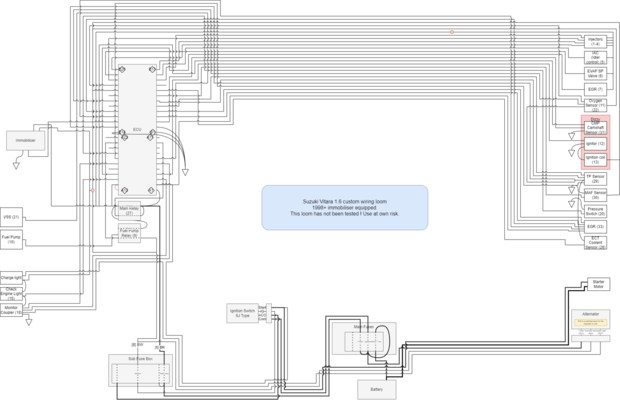Understanding your car’s electrical system can feel like navigating a labyrinth. Whether you’re a seasoned mechanic or a DIY enthusiast tackling a wiring project, a clear and accurate Automotive Electrical Diagram is essential. But with a plethora of software options available, finding the right tool to create or interpret these diagrams can be overwhelming. This article explores various software solutions, discusses their pros and cons, and helps you choose the best fit for your needs.
Navigating the Software Landscape
The market offers a wide range of automotive electrical diagram software, from free online tools to professional-grade packages. Each caters to different needs and budgets. Let’s delve into some popular choices:
Free and Open-Source Options:
- Diagrams.net (formerly draw.io): This versatile online tool provides a user-friendly interface and a library of electrical symbols. It’s ideal for creating basic diagrams but may lack advanced features for complex projects. Users have praised its ease of use and speed compared to more complex software. A significant advantage is the ability to define connection points on components, ensuring accuracy in representing complex circuits.
Paid Software Solutions:
-
TurboCAD: A reasonably priced software offering a comprehensive set of features for creating detailed 2D electrical diagrams. Users have highlighted its affordability and suitability for professional use without the hefty price tag of industry giants like AutoCAD.
-
DipTrace: This software offers a free version with limited capabilities and paid tiers for more advanced features. It’s a good starting point for hobbyists who want to explore paid software without a significant initial investment.
-
Eplan: A high-end solution used by large manufacturers and tier-one suppliers. While powerful, it comes with a steep learning curve and a substantial price tag, making it less suitable for individual users or small businesses. Users familiar with this software praise its capabilities for complex electrical design.
Key Considerations When Choosing Software
When selecting an automotive electrical diagram software, consider the following factors:
-
Complexity of your project: For simple wiring repairs, a free online tool like Diagrams.net might suffice. For designing complex custom wiring harnesses, a more robust solution like TurboCAD or DipTrace might be necessary.
-
Budget: Free options are excellent for occasional use, while professionals might justify the investment in paid software for its advanced features and long-term value.
-
Ease of use: User-friendliness is crucial, especially for beginners. Look for software with an intuitive interface and ample tutorials.
-
Features: Consider features like libraries of pre-drawn symbols, the ability to create custom symbols, multi-color wiring representation, and layering capabilities for organizing complex diagrams.
Best Practices for Creating Automotive Electrical Diagrams
Regardless of the software you choose, adhering to best practices will ensure clarity and accuracy:
-
Use standard symbols: Adhering to industry standards ensures your diagrams are universally understood.
-
Label everything clearly: Each component, wire, and connection should be clearly labeled with its function and specifications. Using a consistent naming convention and abbreviations helps prevent confusion. For wire colors, consider using letter codes (e.g., R for Red, BK for Black) for clarity and consistency.
-
Organize your diagram logically: Group related components and circuits together to make the diagram easier to follow. Using layers allows you to isolate specific systems for easier troubleshooting.
-
Keep it clean and uncluttered: Avoid overcrowding the diagram. Use whitespace effectively to enhance readability.
Conclusion: Empowering Your Automotive Projects with the Right Diagram
Choosing the right automotive electrical diagram software is crucial for successful automotive projects. By understanding your needs and exploring the available options, you can find the perfect tool to decode the complexities of your car’s electrical system, whether you’re troubleshooting a faulty circuit or embarking on a custom wiring project. Remember to prioritize clarity, accuracy, and adherence to standard practices when creating your diagrams.

